It’s essential to cultivate wind-resistant plants in gardens prone to extreme weather conditions or gale-force winds. So, here are my top 10 picks for the best wind-resistant trees that will turn your garden into a tropical paradise.
Contents
- 1. Pindo Palm Trees (Butia Capitata)
- 2. Cabbage Palms (Sabal Palmetto)
- 3. Wax Myrtle (Myrica Cerifera)
- 4. Holly Shrubs (Ilex)
- 5. Crape Myrtle (Lagerstroemia Indica)
- 6. Redbud Trees (Cercis Canadensis)
- 7. Viburnum Shrubs (The Cranberry Bush)
- 8. Japanese Maple Trees (Acer Palmatum & Acer Japonicum)
- 9. Carolina Silverbell (Halesia Carolina)
- 10. Persimmon Trees (Diospyros Virginiana)
Wind resistant trees all have flexible stems which protect them in windy conditions from moving without excessive swaying motions that break, or tug at their roots, thus drying them out. Palms and Crepe Myrtles are prime examples of great wind-resistant plants.
1. Pindo Palm Trees (Butia Capitata)
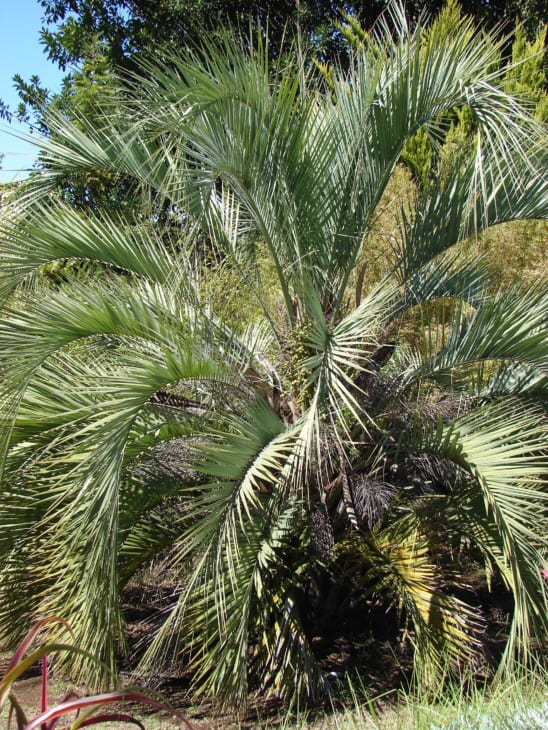
Mature Pindo Palms are hardy, slow-growing wind and heat resistant plants that reach a majestic height of 15-20 feet adorned with beautifully white, yellow, or red flowers.
Pindo’s are also known as Jelly Palms as they produce orange or red-brown fruit that can be used to make jelly, and their seeds may be roasted for coffee substitutes.
They’re a great addition to a wind-prone garden as their sweet, delicious fruits attract wildlife. Plant 3-year-old trees in a full-sun or semi-shaded area with good drainage, away from your porch, as they tend to mess a lot. Water and fertilize them regularly.
Related: Palm Tree Benefits
2. Cabbage Palms (Sabal Palmetto)
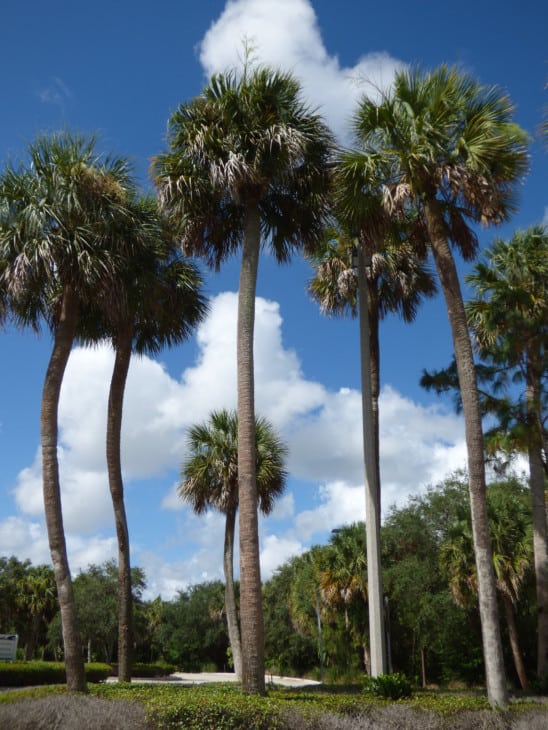
Cabbage or Sabal Palm is a native US tree that flourishes in warm and windy coastal habitats. They can reach a draw-dropping height of 90 feet in the wild with rounded canopies of long fronds to create tropical shaded areas.
Their snow-white flowers, attached to elongated branch stalks flower at the beginning of summer, produce dark-colored berries each fall that are more appealing to wildlife although they are edible.
To create your tropical oasis, plant your palm in a sunny or semi-shaded area in your garden with good drainage. However, be careful not to damage its routes, water it regularly, and remove the weedy seedlings.
3. Wax Myrtle (Myrica Cerifera)
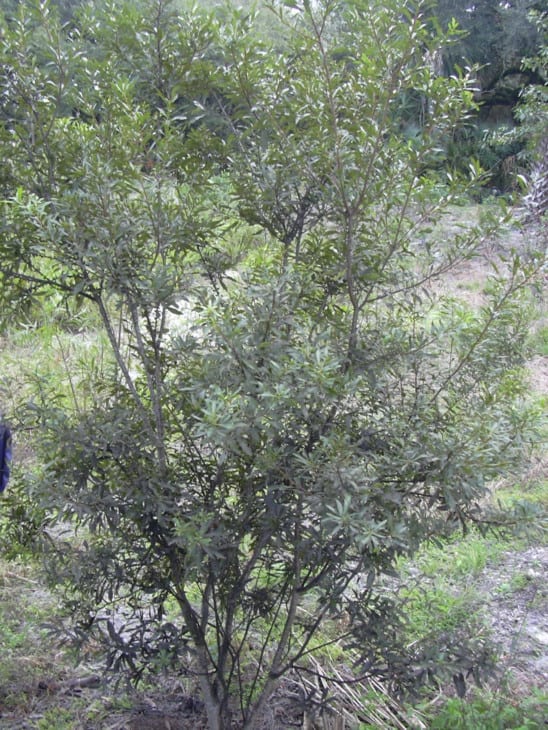
The Wax Myrtle is a shrub or tree that landscapers favor as it is an attractive plant with white-grey berries and greenish spring flowers that grows 3-5 feet per year which can be shaped in various forms.
The fragrant glossy leaves of the Wax Myrtle were historically used to make candles as they are flammable, and their fragrant legacy as the commonly known “Southern Bayberry” has stood the test of time.
To enjoy your Wax Myrtle fragrance, plant them close to an entrance in full-sun or semi-shade in moist soil with a quality organic fertilizer where the routes will not be disturbed by invasive perennial plants. Water and prune them regularly.
4. Holly Shrubs (Ilex)
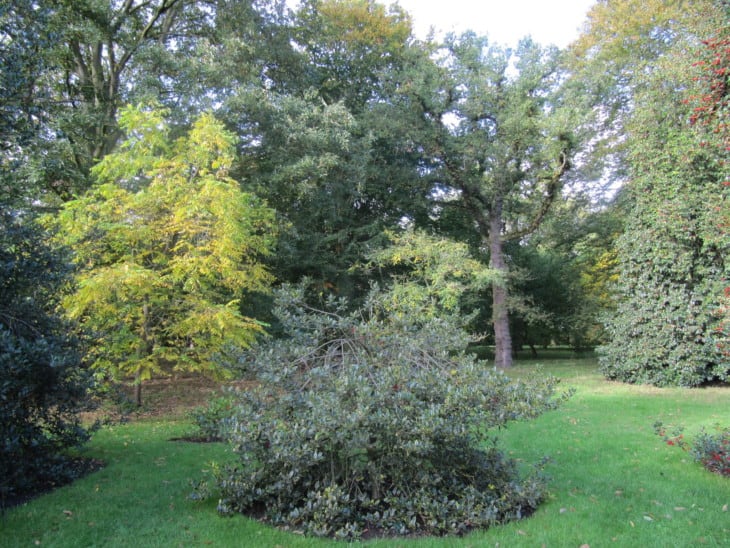
Holly shrubs are a fantastic addition to your garden as they create a structure with a pop of color during the winter months, including a luscious green background for blooms each summer.
Most Holly varieties require a male and a female to cross-pollinate – only female Holly plants produce berries if a male is planted nearby. However, female plants that don’t require male pollination should be available at your local garden center.
During spring or early fall, plant your Holly’s in a well-drained, sunny area with mildly acidic soil. Prune them regularly to maintain healthy growth and apply a rich organic fertilizer annually.
5. Crape Myrtle (Lagerstroemia Indica)
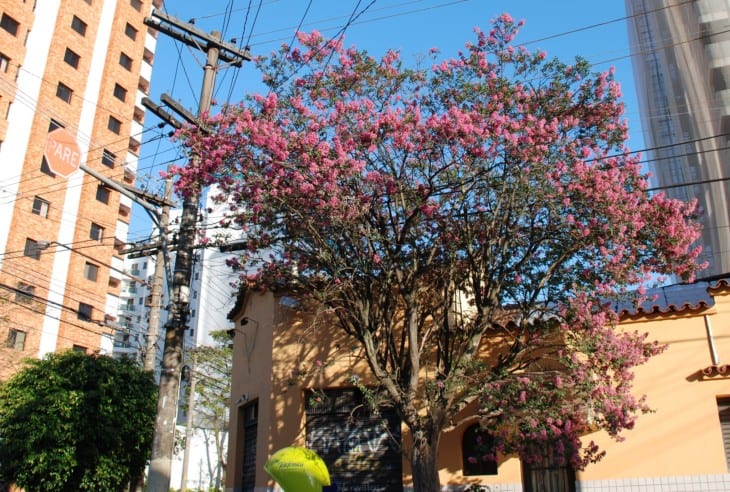
Gardeners in the south love their hardy Crape Myrtle for their gorgeous summer blooms and low-maintenance qualities. They are available in the Centennial with vivid purple flowers or the Caddo semi-dwarf variety with dazzling red blooms.
To illustrate how hardy and easy to grow these plants are, they thrive in USDA Zones 7 to 9, while other species have even grown in zone 6 habitats with minimum average temperatures between minus 10° and 0 °F.
Plant your tree in a sunny area of your garden with good drainage, add a rich organic fertilizer, and water it regularly. Once the plant is established, treat any powdery mildew or mold immediately and cease over-pruning.
Related: Different Types of Crepe Myrtle Trees (with photos)
6. Redbud Trees (Cercis Canadensis)
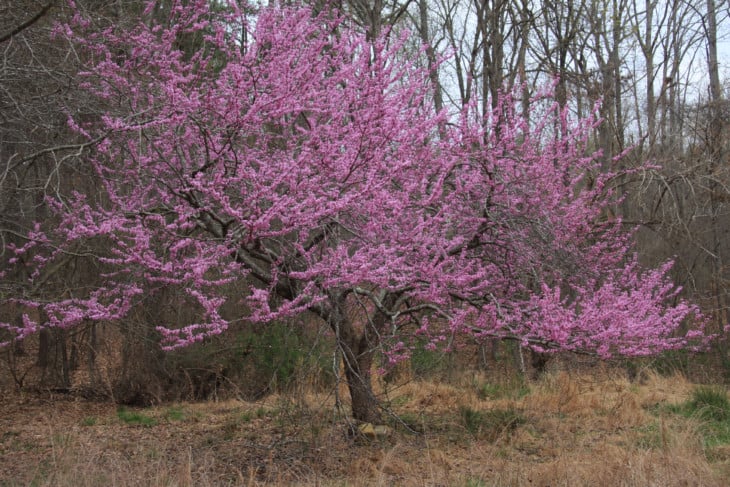
The Redbud is a magnificent indigenous, 20-30-foot-tall tree with lilac-pink blossoms, with long stems ending in pretty heart-shaped leaves. Landscapers favor them for adding a pop of color.
On a side note – the Redbud is also known as the Judas tree; according to legend Judas Iscariot hung himself on a tree that is part of the Cercis Canadensis plant family.
Plant your Redbud tree in early spring in a semi-shaded area with well-drained soil. The planting hole should be three times wider than its routes – once planted, add 3 inches of mulch around the tree. Then prune it regularly and inspect it for battle tree borers or canker infestations.
7. Viburnum Shrubs (The Cranberry Bush)
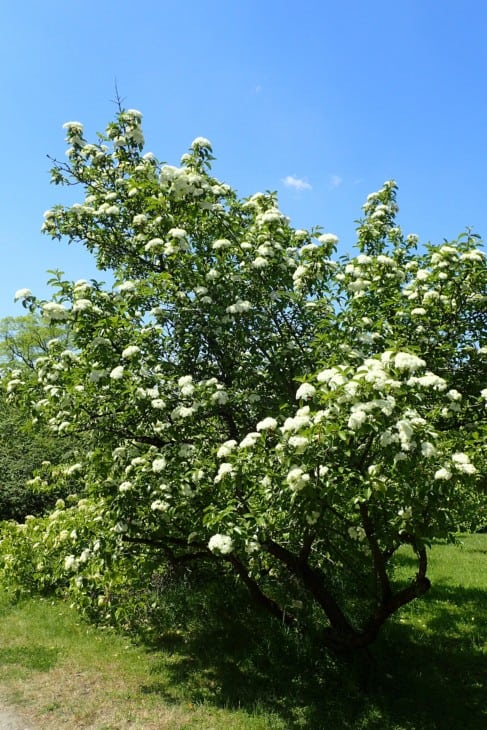
Viburnums comprise of a collection of ornamental (white) flowering trees with striking foliage that reach up to 20 feet, with either pink or white intoxicatingly fragrant spring blooms, and splendid berries, predominantly used as an attractive hedge or screen.
The most well-known Snowball Viburnum or V Opulus features exquisite white flowers that resemble snowballs, while the Asian Viburnums, like the Burkwood and Cayuga shrubs, are also known to produce their glorious fragrance.
Viburnums should ideally be planted in spring or fall, preferably in a sun-drenched location in well-drained fertile soil. The planting hole should be three times wider than the root ball. Water and prune regularly to maintain its growth.
8. Japanese Maple Trees (Acer Palmatum & Acer Japonicum)
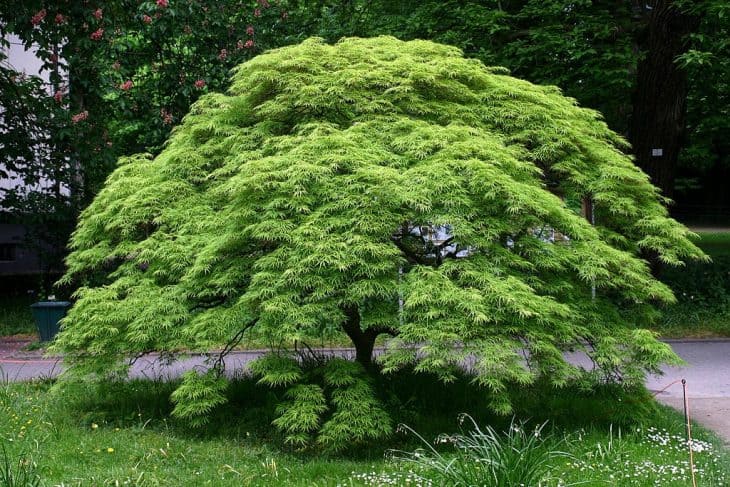
It is incredibly hard to describe this elegant tree as they have so many different colors, sizes, and foliage. Although, they all have a delicate structure with elegant lace-like leaves that turn into magnificently vivid rusty-autumn colors each fall. They are a striking addition to every garden.
The predominant A Pakmatum cultivar is incredibly hardy to such an extent that it grows in icy 6-8 USDA plant zones, while the A Japonicum tree with purple spring flowers thrives in much colder habitats. More diminutive variants are perfect for patio containers or grown as borders.
Japanese maples should ideally be parted in a sunny or semi-shaded area with well-drained soil. Once planted, water well, and add 3 inches of mulch surrounding, but not close to the tree trunk. While young tree leaves might burn in hot climates, the sun will amplify their splendid rusty colors.
Related: Most Common Trees in Japan (With Pictures)
9. Carolina Silverbell (Halesia Carolina)
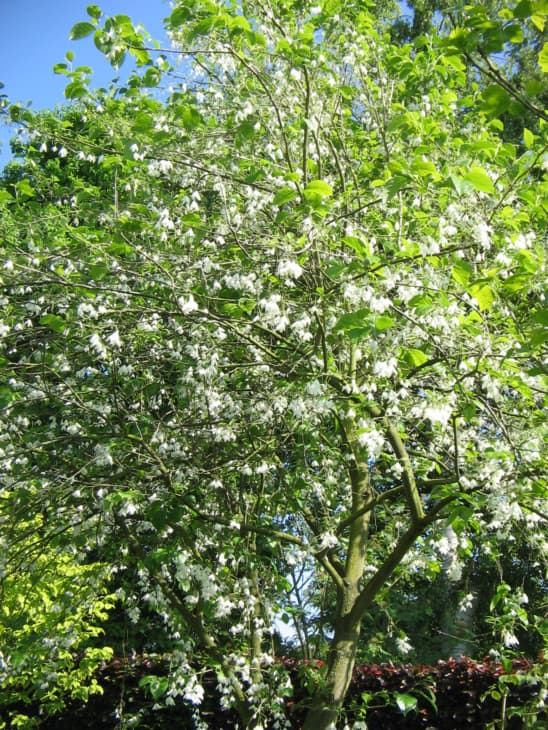
This beautiful understory tree reaches majestic heights of 20-30 feet once fully grown with white bell-shaped flowers grows beside streams in the southeastern part of the United States.
If you are looking for a hardy, wind-resistant tree, the Carolina Silverbell should be your first choice as it grows in icy 4-8 USDA zones where it produces flowers between April and May each year.
For the first two years, grow your tree in a container with acidic, well-drained soil. If a soil sample proves that the soil is not acidic enough, simply add peat moss, aluminum, or iron sulfate. Once the tree is established, replant it in spring and add a well-balanced fertilizer.
10. Persimmon Trees (Diospyros Virginiana)
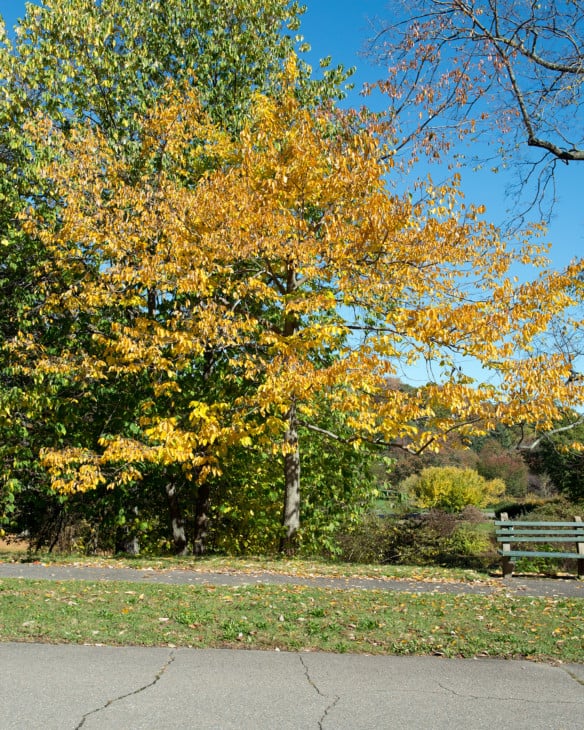
Persimmon trees are a great addition to any garden as they are prized for the unique quality of their rotund bark that looks like alligator skin and their delicious fruits.
While Persimmon wood is used to produce various items, our early forefathers and the Native Americans survived by eating Persimmon fruits that taste like apricots during the icy winter months.
If you want to plant your own, choose an Asian variety that does not need a male tree to bear fruit. Plant the tree in a sunny location with well-drained loamy soil, then water it well. However, please don’t add any fertilizers unless it shows distress.







